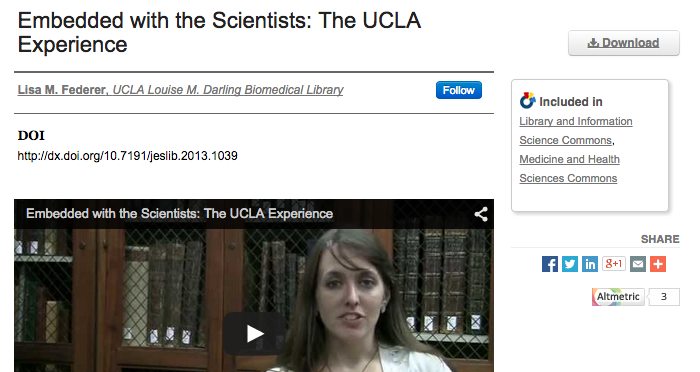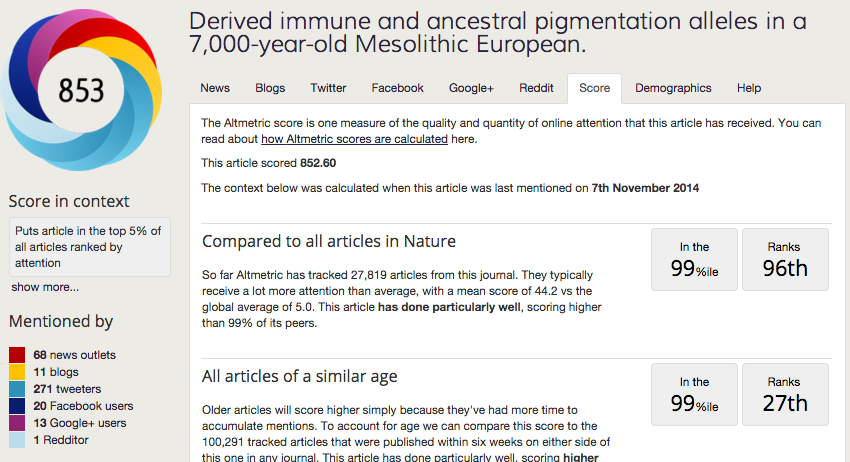Ten ways librarians can support altmetrics

At a recent conference workshop on altmetrics tools, librarians were compared to drug dealers: getting researchers hooked on tools to help them get the most out of their research. As the momentum around altmetrics in higher education gathers pace and Altmetric for Institutions is increasingly adopted by research institutions, there are huge opportunities for librarians to position themselves as a central support team – albeit promoting good scholarly communications practices rather than drugs – and leading the way to integrate altmetrics in institutions.
I joined the Altmetric team last month as the Training and Implementation Manager, having previously led the Research Support Services team at The London School of Economics Library. Part of our offering included providing altmetrics and bibliometrics support, and being the team researchers and professional departments could look to for advice, analysis and training on emerging metrics. But developing an altmetrics service doesn’t happen overnight, and there are various ways to get out there and be an expert in the field.
So, as I take up my new role and start planning how we can extend our education and outreach support, this seems like an ideal opportunity to introduce myself (hello!) and suggest ten ways librarians can support altmetrics:
1. Be an expert
Get familiar with the practical applications of altmetrics for researchers and professional staff in institutions. Learn about monitoring altmetrics attention to new papers, embedding on a CV and demonstrating societal impact. Follow the #altmetrics discussion on Twitter and learn how other academic librarians are supporting altmetrics in their institutions. How can research administrators, communications teams and students also make use of altmetrics? Get to know the tools available and reach out to offer support. Researchers will look to you for advice about altmetrics if you’re able to demonstrate that the Library is the place to go with questions!
2. Embed altmetrics training in existing programmes
Run altmetrics training as part of PhD development programmes, digital literacy sessions and talk about altmetrics for researchers at faculty away days or departmental meetings. It’s useful to set the scene by offering some background on the altmetrics movement, how they work alongside existing metrics and demonstrating the practical uses.
3. Add article level metrics to your institutional repository or resource discovery system

We offer free Altmetric badge embeds for institutional repositories and resource discovery systems, it’s just a line of code and all the details can be found here. We’re increasingly seeing Altmetric badges in resource discovery systems such as Summon and Primo – see our blog post on this for more details.
4. Provide altmetrics advice alongside traditional bibliometric analysis
Altmetrics help complement existing bibliometric indicators. Have a read around the correlation between altmetrics and citation counts. If you’re already providing bibliometrics advice and benchmarking reports for researchers, add altmetrics to this analysis to demonstrate how the data offers a broader view of attention to research. Talk openly about the limitations of using a single score to assess research papers, encourage users to dig deeper to the the original mentions.
5. Encourage researchers to adopt open practices
You’re probably already out there talking to researchers about open access and research data management. Include altmetrics in these conversations – for example when discussing the advantages of making papers open access, explain the opportunities for tracking the subsequent altmetrics. You could also mention the potential for tracking the online attention to open access research data. Altmetrics are another great reason for researchers to be open and can help demonstrate what’s in it for them.
6. Support researchers using altmetrics in grant applications

Talk to researchers and research offices at your institution about adding altmetrics to grant applications and funder reports. Take a look at the Score tab in Altmetric details pages, which puts the Altmetric score of attention in context by ranking against papers of a similar age or other papers in that journal. Reporting back to a funder that a paper is top ranked in that journal according to altmetrics attention is much more meaningful than citing a single number.
7. Inform collection development
Use altmetrics data to identify emerging research interests in your institution to inform purchasing or renewal decisions. For example, identify papers with high altmetrics attention in a particular field of research and check those are part of your library holdings.
8. Identify collaboration opportunities
Support researchers in finding potential collaborators by identifying researchers in a particular field with high altmetrics attention. Do this by running a keyword search in the Altmetric Explorer for a specific discipline and identifying authors with a lot of mentions and engagement surrounding their work.
9. Demonstrate altmetrics uses across disciplines
Altmetrics aren’t just for STEM subjects. Talk to humanities and social science departments during liaison meetings about the opportunities for using altmetrics data to track different types of attention to their outputs. For example, we track attention to scholarly papers in policy documents – valuable for social science researchers in demonstrating real world impact.
10. Get in touch!
We offer free access to the Altmetric Explorer for librarians – contact us for more information and sign up for a webinar to find out more about Altmetric for Institutions!
Register here to receive the latest news and updates from Altmetric
